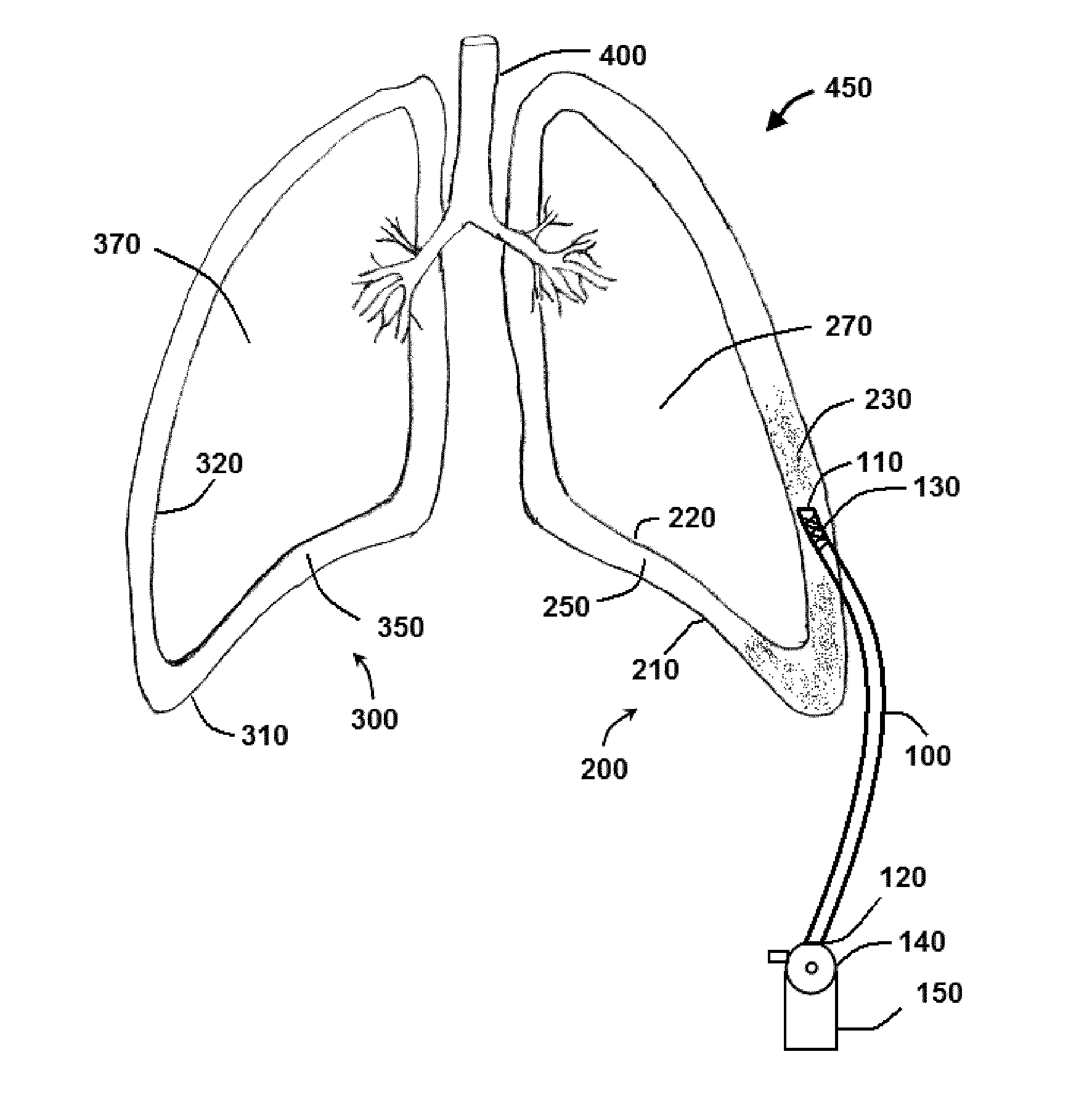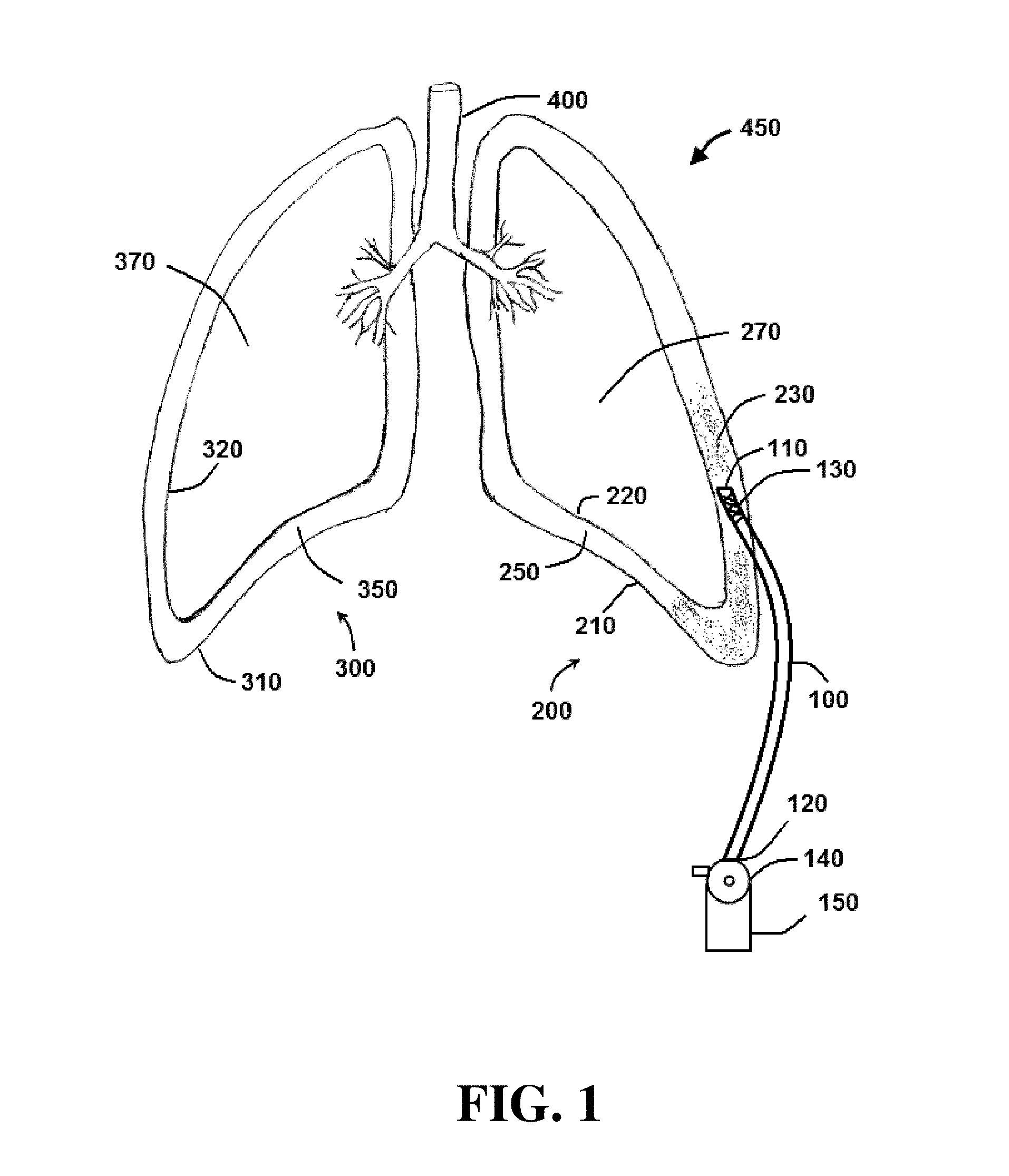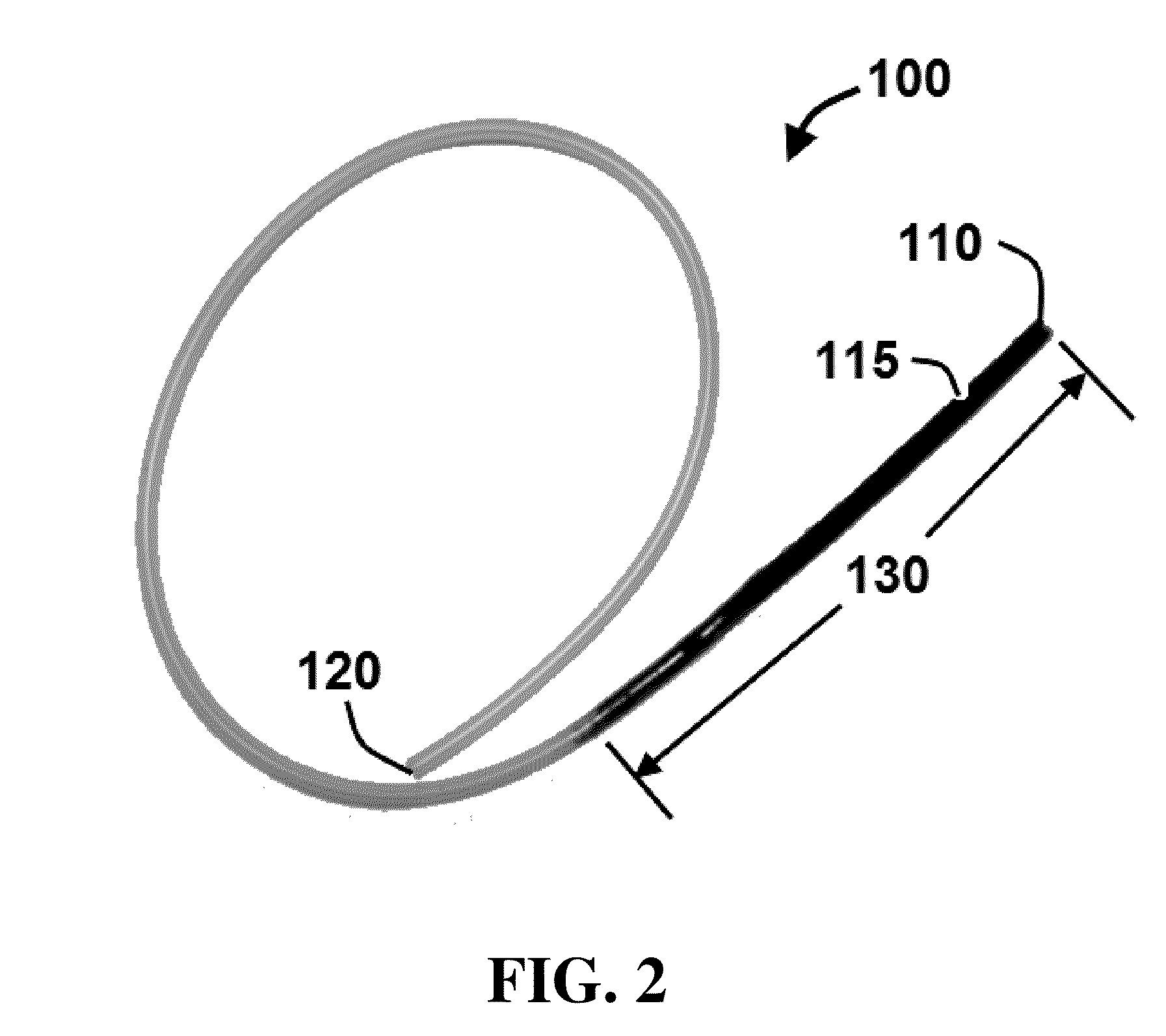Method and system for sustained-release of sclerosing agent
a sclerosing agent and sclerosing agent technology, applied in the field of pleural diseases, can solve the problems of recurrent shortness of breath, pleural diseases, expensive inpatient treatment, etc., and achieve the effects of avoiding hospitalization, minimizing the associated problems, and reducing negative side effects (such as patient discomfort)
- Summary
- Abstract
- Description
- Claims
- Application Information
AI Technical Summary
Benefits of technology
Problems solved by technology
Method used
Image
Examples
example 1
Preparation of Chitosan-Ag+ Coated Catheters and Crosslinking with Glutaraldehyde
[0081]Solution Preparations
[0082]1% (w / w) acetic acid solution: In a 1000 ml graduated flask, 10 g of concentrated acetic acid (98%) and 990 ml double distilled water (without Cl− ions) were combined. 1.8% (w / w) chitosan solution: In a 3 L mixer, 982 mL of 1% acetic acid solution and 18 g of chitosan (type VANSON with degree of acetylation (DA)=20% and a molar mass of 585,000 g / mol) were added. The solution was agitated until all of the chitosan was dissolved. The solution was centrifuged (3500 rpm) to eliminate possible microgels and colored particles. The solution was kept at 5° C.
[0083]14% (w / w) silver nitrate solution: Silver nitrate (35 g) and double distilled water were added to the fill mark of a 250 ml graduated flask. The solution was kept at room temperature and out of the light.
[0084]0.98% (w / w) glutaraldehyde solution: To a 200 ml graduated flask, 2 ml of aqueous 98% solution of glutaraldehy...
example 2
Preparation of Catheters Coated with a Chitosan-Ag+ Complex and Hyaluronate-Ag+ Complex
[0093]Solution Preparations
[0094]1% (w / w) acetic acid solution: See Example 1.
[0095]1.8% (w / w) chitosan solution: See Example 1.
[0096]16% (w / w) silver nitrate solution: In a 250 ml graduated flask, 40 g silver nitrate was added and double distilled water was added to the fill mark. The solution was kept at room temperature and out of the light.
[0097]1% (w / w) sodium hyaluronate solution: In a glass, 1 g of sodium hyaluronic acid and 99 g of water were added. The solution was agitated until the sodium hyaluronic acid was dissolved (around 3-4 hours). The solution was kept in the refrigerator, and was brought to room temperature before use.
[0098]Step A: Application of the First Coating Layer with a Chitosan-Ag+ Solution
[0099]Comments on Procedure:
[0100]The catheters were cleaned with 98% ethanol prior to coating and dried. The thickness of the coating and the quantity of the silver contained depends ...
example 3
[0113]Direct Daily Dosing at Low Levels
[0114]These experiments were carried out in order to determine if low doses of sclerosing agents could result in successful pleurodesis when administered in a repeated fashion. Using daily doses of silver nitrate or doxycycline in decreasing doses starting at the lower limit of what has previously been reported to be effective, further decreases in dosing were administered utilizing single day, 5 day or 14 day regimens. Theoretically utilizing lower doses on a repeated basis may reduce the frequency and / or severity of side effects.
[0115]All experiments were carried out in a rabbit model of pleurodesis which has been extensively utilized in the field of pleurodesis in many centers around the world. As explained in further detail below, standard pleurodesis is score graded one to 8 and is used for assessment of the efficacy of pleurodesis, the number one representing a normal pleural space while 8 represents complete pleural symphysis. A score of...
PUM
| Property | Measurement | Unit |
|---|---|---|
| time | aaaaa | aaaaa |
| time period | aaaaa | aaaaa |
| time | aaaaa | aaaaa |
Abstract
Description
Claims
Application Information
 Login to View More
Login to View More - R&D
- Intellectual Property
- Life Sciences
- Materials
- Tech Scout
- Unparalleled Data Quality
- Higher Quality Content
- 60% Fewer Hallucinations
Browse by: Latest US Patents, China's latest patents, Technical Efficacy Thesaurus, Application Domain, Technology Topic, Popular Technical Reports.
© 2025 PatSnap. All rights reserved.Legal|Privacy policy|Modern Slavery Act Transparency Statement|Sitemap|About US| Contact US: help@patsnap.com



